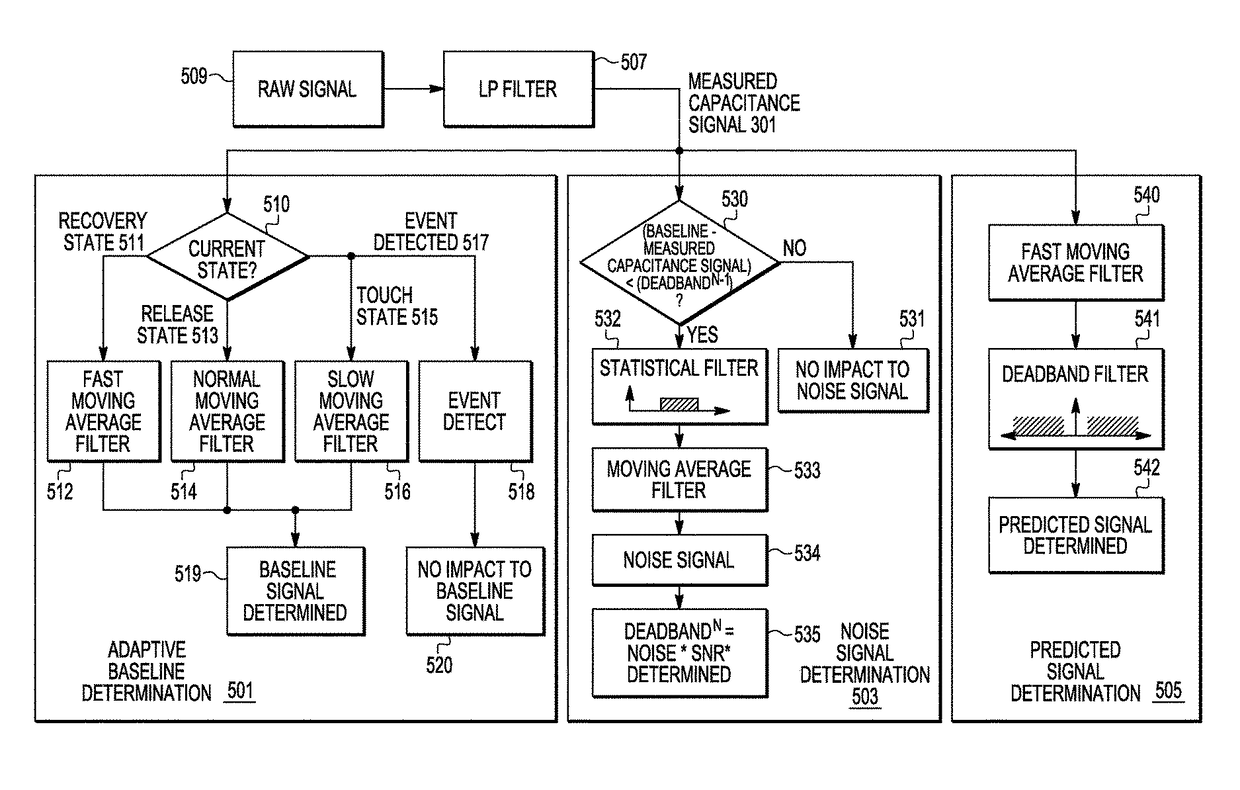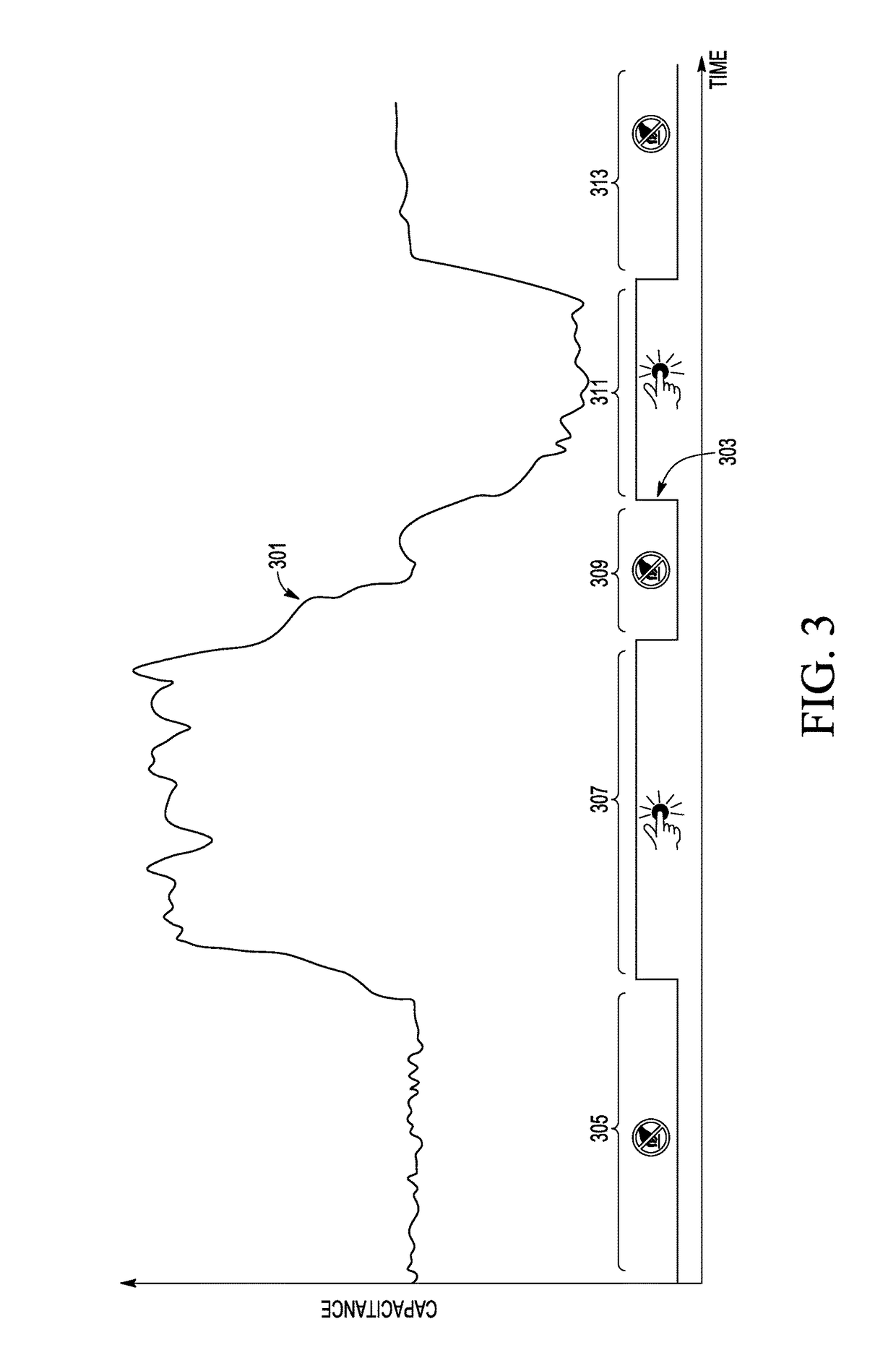Signal adaptive filtering for touch detection
a signal adaptive filtering and touch detection technology, applied in the field of capacitive touch sensor systems and techniques, can solve the problems of false “not touch detected” reading, noise-related fluctuations and significant disturbances in the sampled capacitance signal
- Summary
- Abstract
- Description
- Claims
- Application Information
AI Technical Summary
Benefits of technology
Problems solved by technology
Method used
Image
Examples
Embodiment Construction
[0016]Aspects of the present invention implement signal adaptive filtering techniques for recognizing touch and release events as indicated from a measured capacitance signal received from a capacitive touch sensor device. Such techniques provide for a capacitive touch sensor system with improved electromagnetic noise immunity, improved event detection responses, improved adaptability to dynamically changing environments in which the touch capacitive sensing system is utilized, and improved adaptability to signal sensitivity changes and signal offset over an extended period of time.
[0017]Capacitive sensing is a technology, based on capacitive coupling, which takes the capacitance of whatever is touching the sensor (e.g., the human body or a stylus) as input. Capacitive touch sensor devices may be constructed from many different media, such as copper, indium tin oxide, and printed ink. Two types of capacitive touch sensor systems are (1) mutual capacitance systems, whereby the object...
PUM
 Login to View More
Login to View More Abstract
Description
Claims
Application Information
 Login to View More
Login to View More - R&D
- Intellectual Property
- Life Sciences
- Materials
- Tech Scout
- Unparalleled Data Quality
- Higher Quality Content
- 60% Fewer Hallucinations
Browse by: Latest US Patents, China's latest patents, Technical Efficacy Thesaurus, Application Domain, Technology Topic, Popular Technical Reports.
© 2025 PatSnap. All rights reserved.Legal|Privacy policy|Modern Slavery Act Transparency Statement|Sitemap|About US| Contact US: help@patsnap.com



